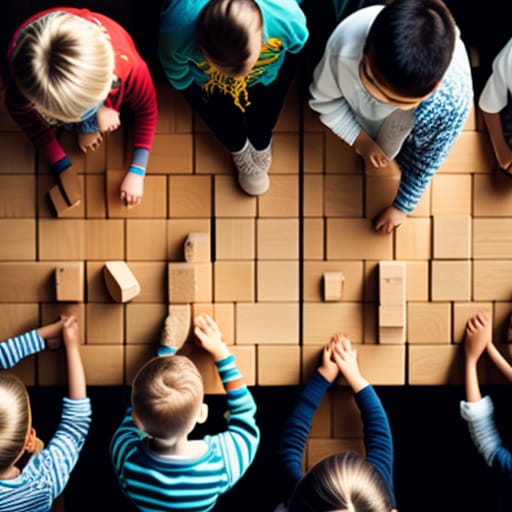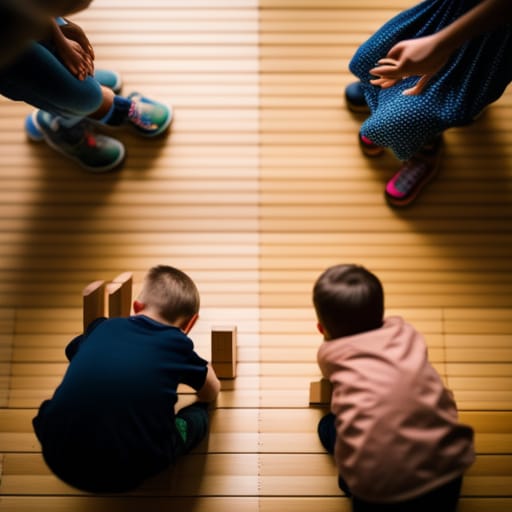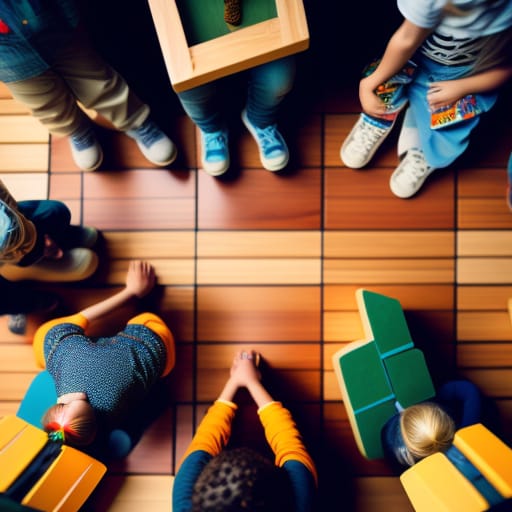Wooden building toys have enchanted children for generations with their timeless simplicity and open-ended play potential. As screen time increasingly dominates childhood, wooden toys provide a refreshing, back-to-basics experience that promotes creativity, spatial thinking, and social skills. This comprehensive beginner’s guide explores the many benefits of wooden building toys, types of wooden sets available, educational value, best usage practices, age recommendations, sustainability, creative innovations, and expert tips on choosing toys. Discover the joy and magic of bringing wooden building blocks to life!

Introduction to Wooden Building Toys
Wooden building toys have been around for centuries, with evidence of basic wooden blocks dating back to the 1800s. Their classic, back-to-basics appeal continues today.
Unlike flashy plastic toys, simple wooden blocks allow children to focus on imaginative, open-ended building opportunities. Wooden toys often feature versatile plank, cube, and cylinder wood pieces in rainbow hues that can construct anything a child dreams up – from castles to trains to animal sculptures.
Wooden building toys promote creativity and problem-solving in a screen-free, hands-on learning environment. Playing with wooden blocks provides important developmental benefits including:
- Enhanced motor skills
- Spatial and visual reasoning ability
- Early math concepts like sorting, stacking, and patterns
- Language and vocabulary growth through storytelling
- Collaboration and social skills through shared play
Wooden toys emphasize process-focused play – with no fixed rules or pre-determined outcomes. The experience takes center stage over any end product. This allows endless room for imagination and innovative thinking.
Types of Wooden Building Toys
A huge assortment of wooden building toys exists today. Popular types include:
Classic Wooden Block Sets
These timeless wooden cubes, rectangles, arches, and more in bright colors allow for open-ended building.
Popular block sets include:
- Melissa & Doug – sustainable solid wood blocks in a wooden crate
- Grimm’s – chunky, rounded blocks in rainbow hues
- Hape – a 65 piece architectural block set
Innovative Wooden Construction Sets
These intricate interlocking sets allow children to resemble complex structures. Popular sets include:
Magna-Tiles – colorful magnetic tiles that click together to build 3D creations
Keva Planks – small wooden planks and towers promote STEM learning
Tegu – magnetic wooden blocks that are fully portable
Wooden Magnetic Building Toys
These sets feature magnetic bricks, balls, sticks, and tiles that cling together. This enables dynamic 3D constructions.
PicassoTiles – building tiles with magnets inside each edge to promote creativity
Magformers – brightly patterned magnetic shapes, rings, and triangles
Magna-Qubix – challenging 3D magnetic puzzles
Wooden Puzzles and Games
These engage spatial thinking and problem-solving skills through hands-on play.
Liberty Puzzles – intricate interlocking wooden jigsaw puzzles
Wooden mazes – marble runs that develop planning and logic
Jenga – the classic block stacking and removal game
Wooden Dollhouses and Furniture
These allow kids to design mini worlds and nurture storytelling and role play.
KidKraft – majestic wooden dollhouses and furnishings
Melissa & Doug – modern wooden doll playsets
PlanToys – sustainably-made wooden dollhouses
Educational Value of Wooden Building Toys
The open-ended nature of wooden building toys provides enormous educational benefits for children including:
Enhancing Fine Motor Skills
Grasping, stacking, and manipulating wooden blocks develops dexterous finger and hand movements. This aids overall coordination.
Promoting Creativity and Imagination
The possibilities are endless when building with simple wooden toys. Kids flex their creative muscles and bring imaginative play scenes to life.
Encouraging Problem-Solving
Figuring out how wooden pieces fit together in sturdy structures involves spatial reasoning, trial and error, and visualizing solutions.
Supporting STEM Learning
Wooden building toys get kids engaged in engineering, construction, design, and foundational math and science concepts.
Fostering Social Skills
Collaborating to create wooden structures teaches teamwork, communication, sharing, and compromise.
In the digital age, wooden building toys get back to the basics – promoting vital developmental skills through the power of play.
Best Practices for Using Wooden Building Toys
Follow these tips to maximize the play value and longevity of wooden building toys:
Provide a large open play space – Children need room to maneuver and build grand creations.
Incorporate into learning environments – From classrooms to waiting rooms, provide building blocks to engage minds.
Encourage collaborative play – Allow groups of children to build together to learn sharing and teamwork.
Teach proper care and cleaning – Show kids how to gently stack, store, and clean wooden toys.
Check for damage – Inspect toys for loose pieces or splinters regularly. Discard damaged toys.
Use safety surfaces – Provide a soft mat or rug for the building in case of falls.
With attentive adult guidance and supervision, wooden building toys provide endless opportunities for learning through developmentally enriching play.

Incorporating Wooden Building Toys into Different Age Groups
Wooden building toys provide joy and learning across age ranges when selected appropriately:
Toddlers – Start with chunky, no-small-piece blocks to grasp and mouth. Encourage knocking down simple stacks.
Preschoolers – Foster creativity and storytelling with colorful standard blocks and figures. Introduce interlocking sets.
School-Age – Engage spatial thinking and STEM skills with intricate building sets, puzzles, and games.
Teens – Provide creative outlets like ornate architecture-themed blocks or challenging puzzles.
Adults – Relieve stress and express creativity via artistic block sculptures or zen-like stacking.
For children with special needs, adaptive toys like large grip blocks promote inclusive play.
No matter the age, the simple pleasure of wooden building toys spans generations!
Sustainability and Eco-Friendly Aspects of Wooden Toys
Wooden toys have innate sustainability benefits:
Renewable Resource – Most wooden toys come from replanted timber like maple, beech, and birch. These regenerate naturally over time, unlike plastic.
Biodegradable and Recyclable – Wooden toys can fully decompose and return nutrient-rich elements to the earth. Many communities recycle wood scraps.
Ethical Production – Look for toys made with FSC certified wood from responsible sources. Avoid rainforest-sourced wood.
Heirloom Toys – Well-made wooden toys literally become family heirlooms passed down for generations.
Locally Made – Support small businesses selling locally handcrafted wood toys to reduce shipping miles.
Choosing sustainably produced wooden building toys is a smart, eco-friendly investment.
Creativity and Innovation in Wooden Building Toys
While wooden building toys are classics, modern innovations add fresh twists:
Artistic Designs – Some sets feature colorful gradients or patterns that encourage kids to “paint” with blocks.
Technology Integration – Digital apps allow virtual block play and 3D modeling of physical wooden constructions.
Eco-Friendly Materials – Companies use sustainably sourced woods like bamboo, cottonwood branches, and recycled cardboard.
Multicultural Themes – Diverse geographical architecture collections teach global empathy through play.
Special Needs Adaptations – Toys accommodate disabilities via adjustable components, textures, Braille, and more.
Wooden blocks will continue to evolve in creative ways while retaining their nostalgic appeal.
Parent and Educator’s Guide to Selecting Wooden Building Toys
Follow these tips when choosing the best wooden building toys:
Age-Appropriateness
Select toys with sizes, textures, and complexity fitting the child’s motor skills and interests.
Durability and Safety
Opt for smooth sanded woods with no toxic finishes. Solid hardwoods like beech and maple withstand years of play.
Open-Ended Versatility
Blocks with minimal detailing allow for endless creativity. Extra figures can supplement for storytelling.
Educational Aspects
See if the toy promotes skills like spelling, stacking, patterns, or STEM building.
Eco-Friendly Production
Choose brands that use renewable FSC woods and non-toxic dyes. Support local makers when possible.
Budget Considerations
You can find basic wooden blocks very affordably. Invest more in hardwood quality and uniqueness.
Reviews and Testimonials
Check independent toy reviews and parent feedback before purchasing.
The right wooden building toys will provide exceptional value by engaging children’s bodies, minds, and imaginations for years on end!
Case Studies and Success Stories with Wooden Building Toys
Listen to first-hand accounts of the magic wooden building toys provide:
“We came home and my 3-year-old immediately sat on the living room rug and started building with her new Grimm’s rainbow blocks. For 2 hours she created one scene after another – a zoo, a city, a bridge – chatting and making up stories the whole time! It was the most focused I’d ever seen her.” – Jane, Mom
Schoolteacher Sara set up a block station in her classroom. “Students flock to the blocks during free choice time, collaborating to construct elaborate castles with bridges, towers, and secret rooms. I’ve watched kids who rarely interacted socially come out of their shells and cooperate on amazing block creations. It’s brought so much joy to the classroom.”
Nonprofit Wonder Blocks provides wooden block play free of charge at children’s hospitals and shelters to promote healing. Their staff reminisce on the uplifting power of play therapy with wooden blocks during difficult times.
Research shows open-ended wooden block play helps develop critical cognitive, motor, and social skills. But more importantly, blocks engage kids in meaningful hands-on fun!

Future Trends and Innovations in Wooden Building Toys
Some exciting areas that may shape the future of wooden building toys include:
- Sustainability – More brands adopting eco-friendly materials and ethical production
- Technology – Integration of digital elements into block play through apps and coding toys
- Accessibility – Adaptations allowing children of all abilities to play together
- Creativity – Greater artistic experimentation with visual designs and unconventional building materials
- Customization – Increased options for consumers to personalize toys with photos and text
- Education – Blocks teaching advanced STEM and robotics concepts
While wooden building toys will continue modernizing in new directions, their nostalgic, screen-free appeal endures. The simple joy of imagining and creating with wooden blocks remains timeless.
Conclusion
For centuries, generations of children have delighted in building worlds and bringing stories to life with simple wooden blocks and toys. As educational research extols the cognitive and social benefits of open-ended play, wooden building toys provide the perfect outlet to flex young minds while learning key developmental skills. With mindful toy selection and engaging child guidance, wooden blocks offer endless magical play potential. So rediscover the creativity and joy of playing with timeless wooden building toys!
Ready to get started with wooden building blocks? Here are top-recommended toy sets to inspire young builders:
- Grimm’s Large Rainbow Wooden Block Set
- Melissa & Doug 60-Piece Standard Unit Wooden Block Set
- Magna-Tiles 32-Piece Clear Colors Set
- Tegu Magnetic Wooden Block Set
Resources:
- NAEYC article on benefits of block play
- AAP guidance on selecting toys by age
- Five benefits of open-ended play
Frequently Asked Questions
What are the best wooden building blocks for toddlers?
Look for large, chunky wooden blocks with no small parts for little hands. Melissa & Doug and Hape make great starter sets. Ensure blocks have smooth, sanded edges for safety.
What skills do wooden construction toys teach?
Building with wooden toys promotes spatial thinking, engineering concepts, communication, fine motor skills, and imaginative play. Open-ended building fosters creativity and problem-solving.
How can I use wooden building blocks in educational settings?
Incorporate a block station in classrooms or waiting rooms. Encourage collaborative building to teach teamwork. Build letters and shapes to support early literacy and math.
Are wooden building toys safe for children?
Properly sanded natural wood blocks are safe if used with adult supervision. Inspect for damage regularly and discard broken toys to prevent injury risks. Use soft play surfaces.
What makes wooden toys more eco-friendly than plastic?
Wood is biodegradable, renewable when sourced responsibly, and can be recycled. Quality wooden toys last for generations. Choose brands that use non-toxic stains.
Can wooden building toys help children with special needs?
Yes, adapted toys like large grip blocks and textures promote inclusive play and development. Building side-by-side teaches social skills. Consult occupational therapists for recommendations.
Why choose wooden toys in the digital age?
Wooden building toys get back to basics, promoting hands-on creativity, imagination, and engineering skills – no batteries required! Open-ended play counters screen overuse.